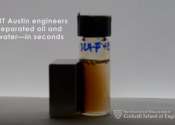Soft and spherical: Researchers study dynamics of drop impact
For the most part, fluid dynamics researchers have focused efforts to understand the details of impacting drops on flat rigid surfaces; the effect of curved, convex or compliant surfaces on the dynamics of impacting drops ...









